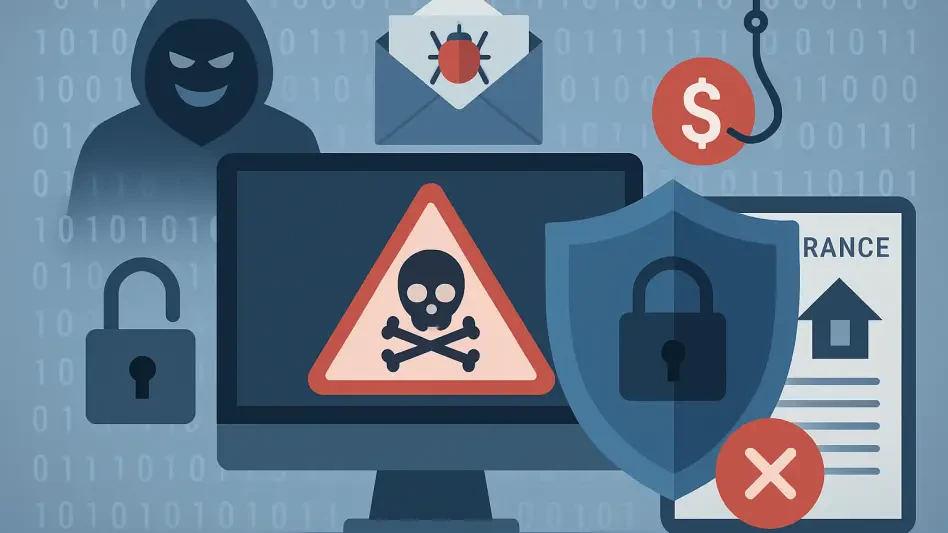In an alarming development within the cybersecurity landscape, the hacker group known as Scattered Spider has shifted its focus towards the insurance industry, a move that has raised significant concerns among experts and industry players alike. Having originally honed its skills on targeting U.K. and U.S. retail sectors since April, this collective now seems set to exploit vulnerabilities within insurance companies, prompting a slew of warnings from cybersecurity experts. Google researchers have highlighted this shift, indicating that Scattered Spider employs advanced social-engineering techniques. Their methods are particularly adept at compromising customer service departments using tools like bypassing multifactor authentication, thereby underscoring their growing threat. John Hultquist, a notable figure from the Google Threat Intelligence Group, has confirmed multiple incidents within the U.S., described by several telltale attributes of Scattered Spider’s tactics. This rise in targeted cyberattacks calls for heightened vigilance and strategic defenses across the insurance sector to counter these sophisticated threats effectively.
Transition to the Insurance Sector
This transition to the insurance industry from retail was foreseeable for those closely monitoring cybercrime trends. Scattered Spider’s methodical approach, leveraging sector-specific vulnerabilities, highlights a dangerous adaptability. The group’s ability to tailor its tactics to the insurance sector represents a significant evolution in their modus operandi. Traditionally focusing on retail, Scattered Spider’s knowledge of exploiting customer service operations has now found fertile ground in insurance companies. These businesses often hold large volumes of sensitive personal and financial data, making them a lucrative target for cyber offenders. Moreover, the use of sophisticated social-engineering techniques allows the group to maneuver around established security protocols, rendering existing defense mechanisms inadequate. By specifically targeting customer service teams, Scattered Spider circumvents even multifactor authentication, showcasing the necessity for improved cybersecurity measures tailored to the unique challenges of the insurance sector.
The implications of Scattered Spider’s capabilities extend beyond just the immediate threat of data breaches. Insurance companies are now in a precarious position, grappling with the dual challenge of protecting sensitive customer information while maintaining trust. As data management becomes increasingly complex, the industry must prioritize safeguarding mechanisms and proactive threat intelligence. The tactical shift underscores an urgent need for companies to reassess their cybersecurity frameworks, focusing on enhanced employee training and robust incident response strategies. Collaboration among stakeholders, including government bodies and industry leaders, becomes crucial to mount a united front against such cyber threats. Given that Scattered Spider has proven adept at evading conventional security measures, fostering a culture of awareness and readiness within organizations is essential to mitigate potential damages and protect clients’ interests at all costs.
Recent Incidents and Industry Response
A poignant example of Scattered Spider’s menace is the recent cyberattack on Erie Insurance, which has drawn significant attention. Although the full extent of the attack and its perpetrators remain under investigation, this incident has stirred awareness within the industry. Erie Insurance is actively urging its customers to refrain from communicating sensitive information via phone or email links, reflecting heightened caution post-incident. Such advice underscores the vital role of customer cooperation in minimizing potential damages from cyberattacks. This ongoing investigation and Erie’s response illustrate the criticality of a swift reaction post-breach, highlighting the balance between managing immediate fallouts and reconstructing a secure digital infrastructure. As investigations progress, they might yield insights that could inform better defense strategies, benefiting the wider insurance sector.
The overarching sentiment in the wake of these events is one of vigilance and preparation. Insurance companies are revisiting their security measures, strengthening their protocols to prevent similar breaches. There is an increased emphasis on developing a robust incident response strategy, ensuring rapid mobilization and mitigation should another attack occur. While industry-wide efforts coalesce around these new demands, there is a concurrent push for government intervention, emphasizing the necessity for regulatory frameworks that mandate stringent cybersecurity practices. As Scattered Spider’s activities continue to evolve, vigilance remains paramount. The collective response from affected sectors highlights the importance of a proactive stance in protecting the integrity of the insurance industry against increasingly savvy cyber adversaries.
Future Directions and Mitigation Strategies
An alarming shift has occurred in the cybersecurity world with the hacker group Scattered Spider turning its attention to the insurance industry. Known for targeting the retail sectors in the U.K. and U.S. since April, this group is now exploiting weak points in insurance companies, causing considerable concern among experts and industry stakeholders. Cybersecurity specialists, including researchers from Google, have pointed out this new focus. Scattered Spider has been using advanced social-engineering tactics, effectively penetrating customer service departments and bypassing multifactor authentication, increasing their threat level substantially. John Hultquist, a key figure at the Google Threat Intelligence Group, has acknowledged numerous incidents in the U.S. that match Scattered Spider’s operational characteristics. This surge in cyberattacks highlights the need for increased alertness and well-planned defenses within the insurance sector to combat these sophisticated cyber threats effectively and protect sensitive data.








